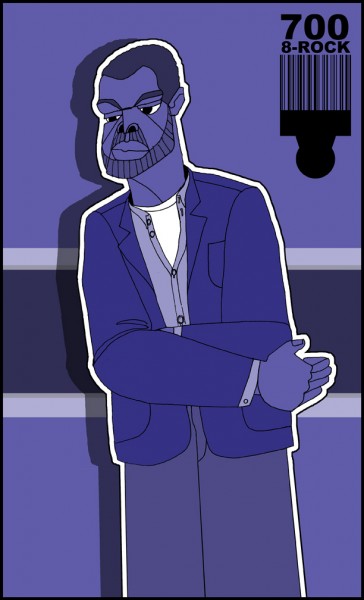I have finally reached drawing #700. It’s a little larger than most of my other drawings (8.5″x14″ instead of the usual 8.5″x11″), but I have otherwise chosen to mark this milestone (700 drawings completed in three years and eight months) without much visual fanfare.
Seven hundred drawings in, I have come to understand more about my own gaze on Black men than I have about Black men themselves. The one thing you are sure to learn when you are immersing yourself in depicting a particular population is a whole lot more about your relationship to members of that group. I grew up surrounded by Black men. In addition to my brother and my dad, I had the benefit of growing up with an army of uncles and great-uncles, a seemingly endless contingent of cousins, both of my grandfathers, two great-grand fathers, and beloved Black male friends. Because of them, my understanding of the importance and value of men of African descent is almost exclusively based on the love and safety and humor and warmth and friendship that those relationships have provided for me.
Perhaps this is why, up to this point, I have only included in this series one of my very good Black male friends (Myronn Hardy) and none of my relatives. Even at the beginning of this process, I knew that in order to get to a truth beyond my own limited experiences, I needed to draw either strangers or men who I did not know very well. In the process of seeking out and depicting nearly 700 strangers, I have become aware–sometimes painfully aware–of how little access I have to the complex positionality of Black men who are, as a group, both marginalized and hyper visible, often in ways that Black women (like me) are not.
More importantly, I am considerably more conscious of the pitfalls of setting forth to draw the members of a group to which I do not belong, especially from a position of relative power (as a college professor with a measure of educational and economic privilege).
I hope to use my last 301 drawings to create a more complete portrait of the diversity of Black manhood in the San Francisco Bay Area. I want to spend these last drawings more focused on some of the experiences, genders, ethnicities, economic fortunes, locations, and ages of Black men that I have either underrepresented or left out entirely.
In the process I will, no doubt, continue learn more about myself, my position, my power and my disempowerment than I will learn about the lives and experiences of my Black male subjects. But that will not preempt the overarching goal of this project which is, in the end, to create representations of Black men that, taken together, will complicate and expand rather than limit and define our understanding of those figures in whom Blackness and manhood intersect.
Ajuan Mance
